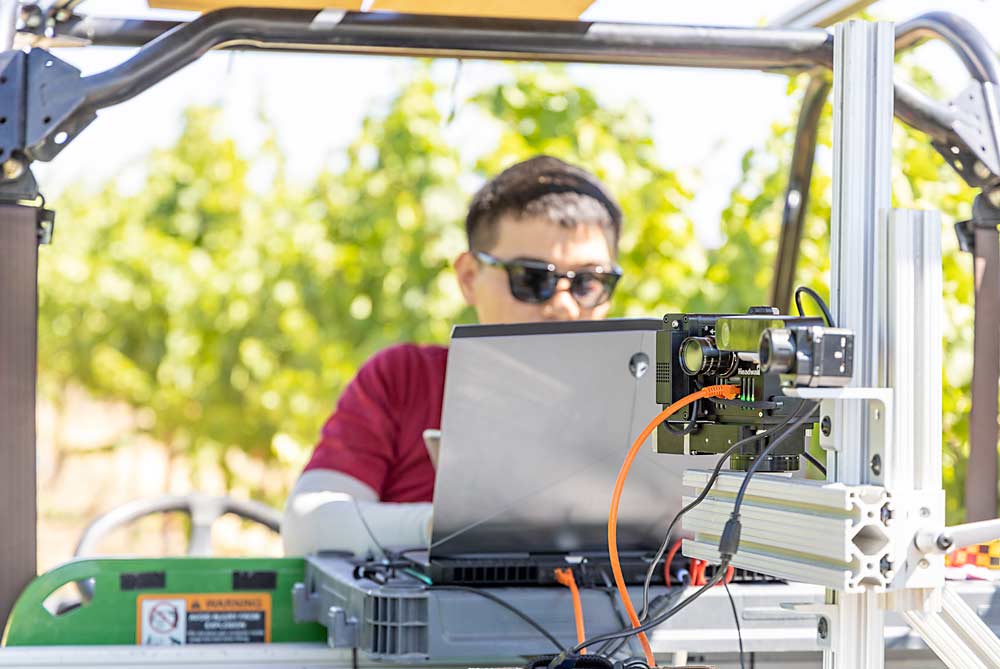
Growers know water stress when they see it: Shoot tips stop their rapid growth, tendrils turn limp and petioles droop, and leaves begin to bend.
But hyperspectral cameras and multispectral cameras can see signs of water stress long before it’s apparent to even the well-trained eye.
Using such sensors to estimate plant water stress directly, rather than indirectly with soil moisture sensors or weather forecasts and evapotranspiration data, could usher in a new era of precision irrigation, according to Markus Keller, a viticulture professor at Washington State University. In the arid west, irrigation remains one of growers’ most important tools to control fruit quality, he said, and is often considered part of the art of wine grape growing.
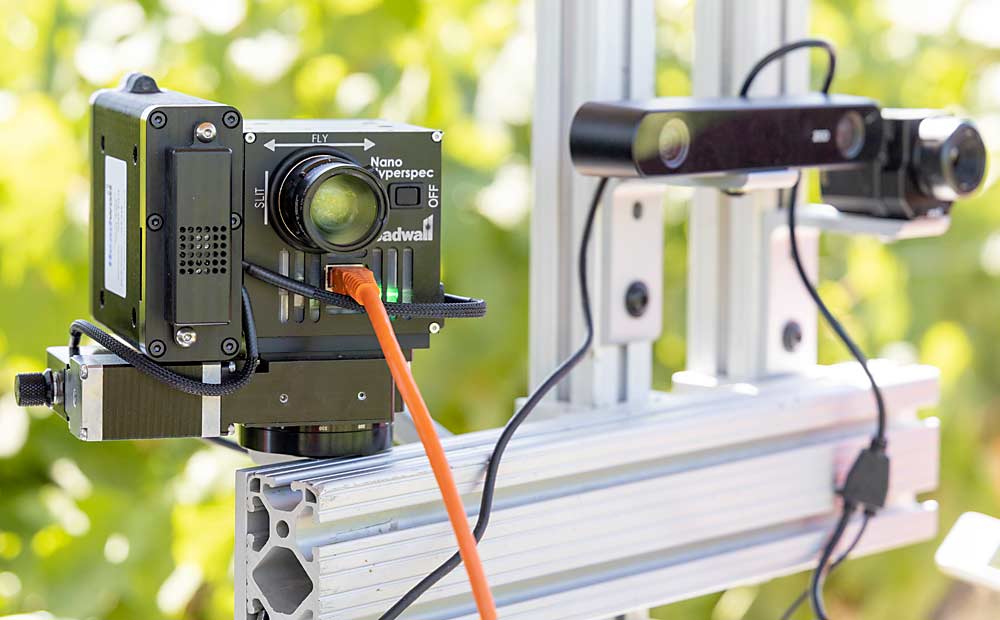
“For many growers it’s not as much an art as a black box,” he said. “It’s very difficult to manage things properly if we can’t measure it.”
Keller and his graduate student, Geraldine Diverres, teamed up with engineers from WSU’s Center for Precision and Automated Agriculture Systems (CPAAS) to see how hyperspectral sensing technology, which picks up far more wavelengths than the human eye, could guide irrigation. The team received nearly $700,000 in 2018 from the National Science Foundation and the U.S. Department of Agriculture to support the work.
They aim to develop a reliable, robust and repeatable model to estimate vine water status, said CPAAS professor Manoj Karkee, the principal investigator on the project, along with CPAAS director Qin Zhang and computer science professor Yinghui Wu of Case Western Reserve University.
For the first step, the new hyperspectral sensors must be correlated with traditional measurements of plant water stress: stomatal conductance and leaf water potential.
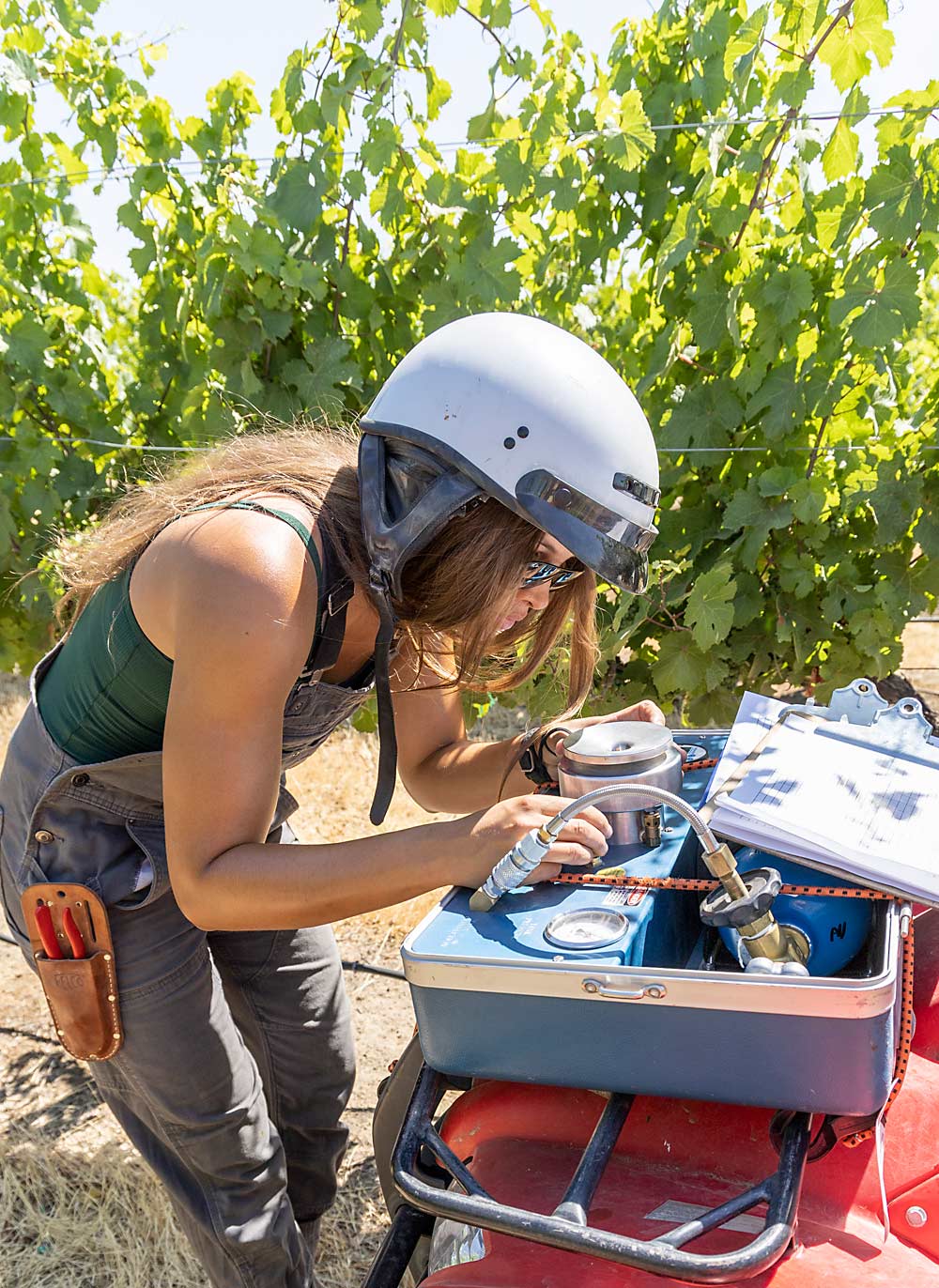
If stomata are the windows in the leaves for gas exchange, stomatal conductance refers to how open or closed the windows are, Diverres said. More open, they lose more water. Vines have to find this sweet spot between photosynthesis and evapotranspiration and water stress.
In early July, she taught another WSU graduate student, Priyanka Upadhyaya, how to use a tool called a gas exchange analyzer to measure the stomatal conductance of experimental vines facing different levels of water stress. Diverres also used a pressure bomb to measure the leaf water potential of the same leaves Upadhyaya sampled, while Chenchen Kang, an engineering grad student, used the camera sensors to scan the same vines.
Karkee said the light reflectance recorded by the camera does correlate with leaf water potential, and the model they’ve built so far can predict plant water status within 80 percent accuracy.
Combining all that data, along with soil moisture data, will help to correlate what leaf spectral signatures indicate with respect to vine water stress.
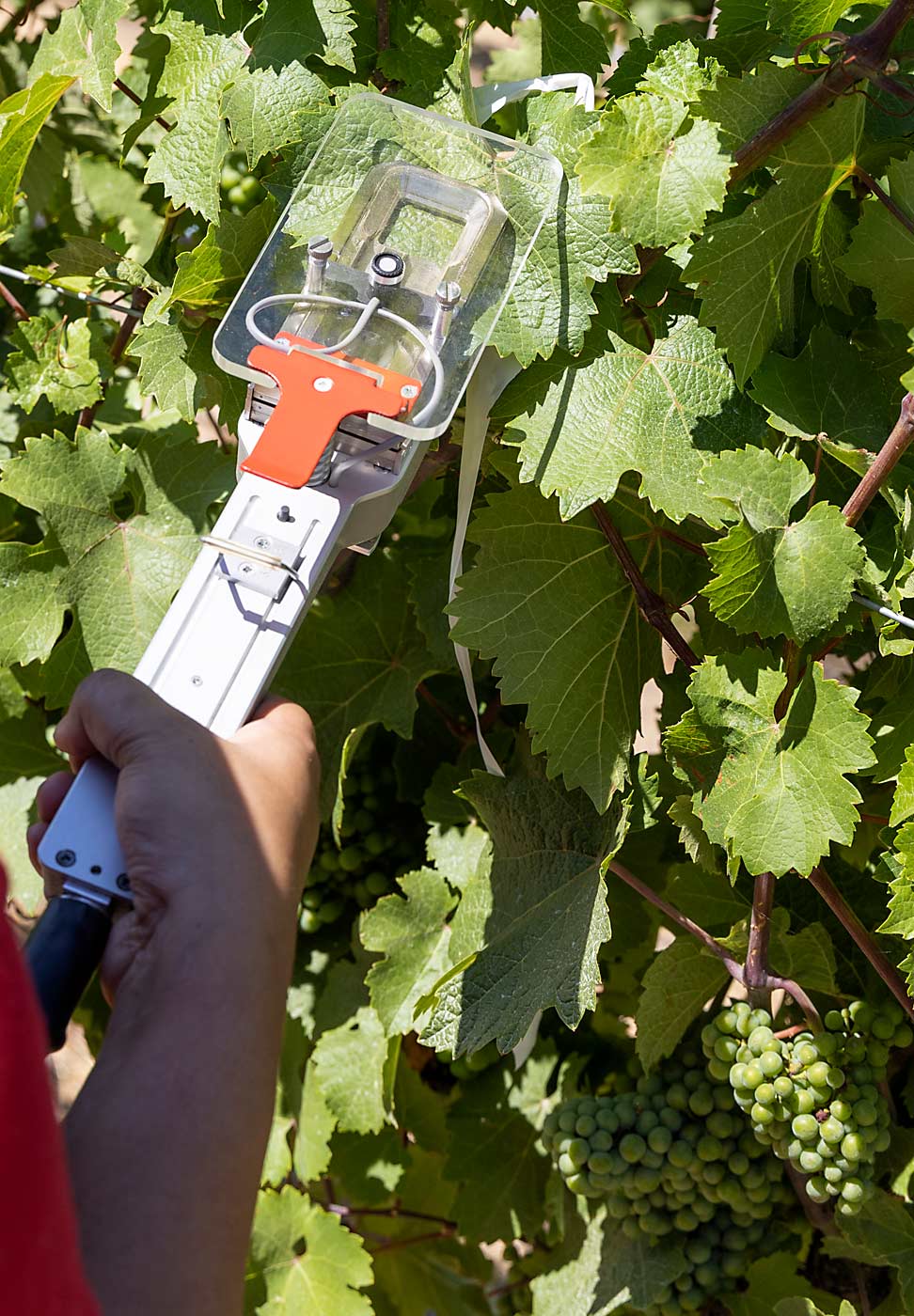
Next, Wu, the computer scientist on the project, will build this information into one model to predict how much water vines need for the upcoming week, turning it from a water stress measure to an irrigation management tool.
Then, that model will need to be tested.
“In the next year or two, we are hoping to have a prototype system for decision making,” Karkee said. “It’s a framework for continual improvement year after year.”
Eventually, a drone or ATV carrying a hyperspectral camera should be able to map the vine water need variability across the block, Keller said.
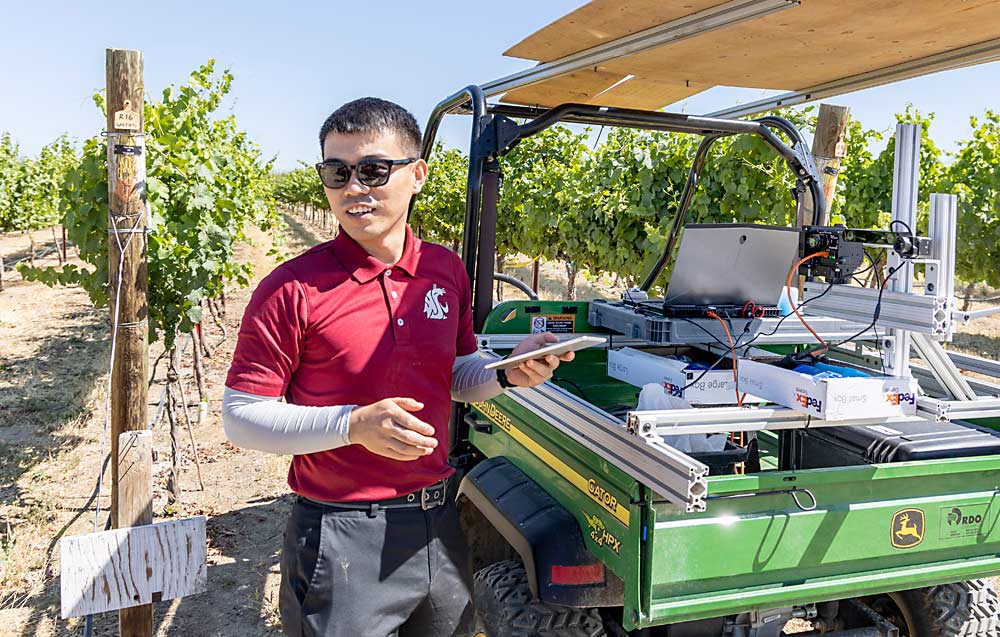
“One of the main problems when you farm is variability,” he said. “When you irrigate with a one-size-fits-all approach, some vines will be overwatered, some will be underwatered, and some may be just right.”
Currently, growers have few tools for variable rate irrigation, Keller said, but he believes it’s coming.
For example, Nick Dokoozlian, vice president of research at E. & J. Gallo, recently shared insights from a precision irrigation trial he led at a precision viticulture symposium, breaking a vineyard into different irrigation zones due to soil and water need variation.
That approach isn’t yet practical for commercialization, said Russ Smithyman, the chair of the National Grape Research Alliance, which hosted the virtual symposium where Dokoozlian spoke. But the tools Keller and Karkee are developing will have value for growers either looking to manage their farms to be more uniform or to better understand and use the variability, he said.
Keller and Karkee agreed that the technology to deploy vine-by-vine irrigation isn’t yet available, but it’s coming.
“It’s expensive. But at one point drip was too expensive to make it in the marketplace, and now everyone uses drip,” Keller said. “This is a project that’s ahead of its time.”
—by Kate Prengaman






Leave A Comment